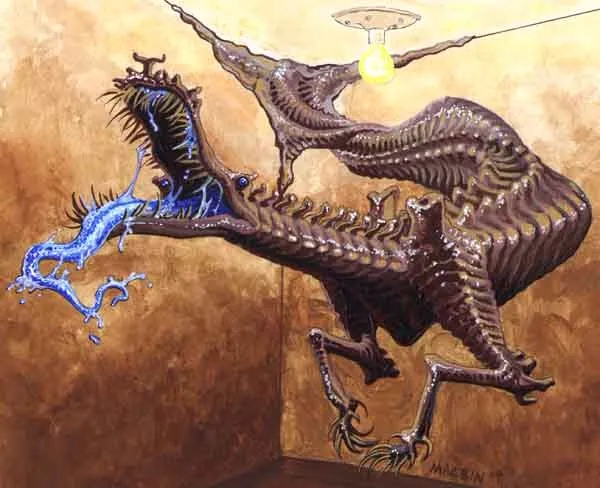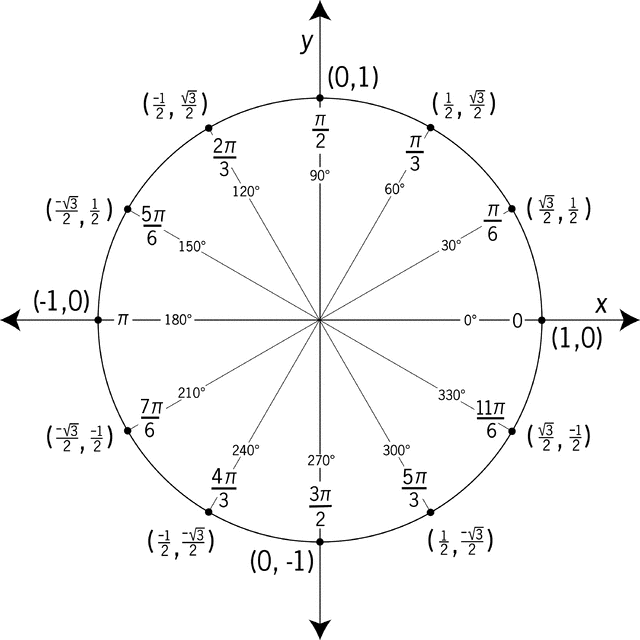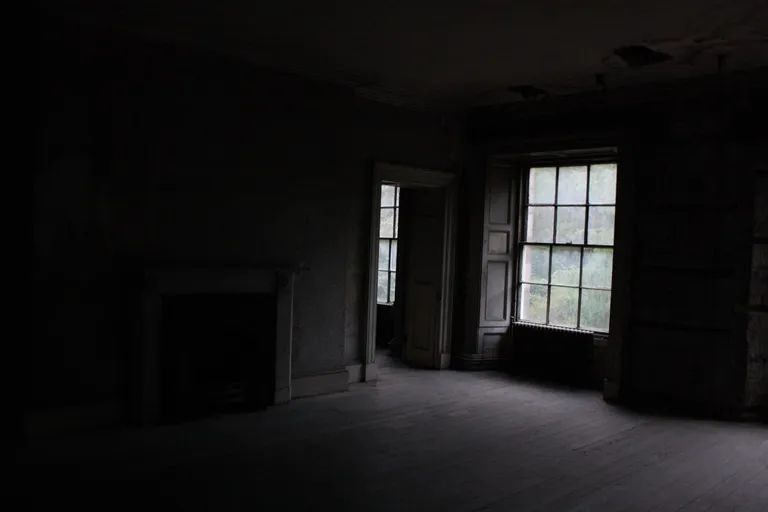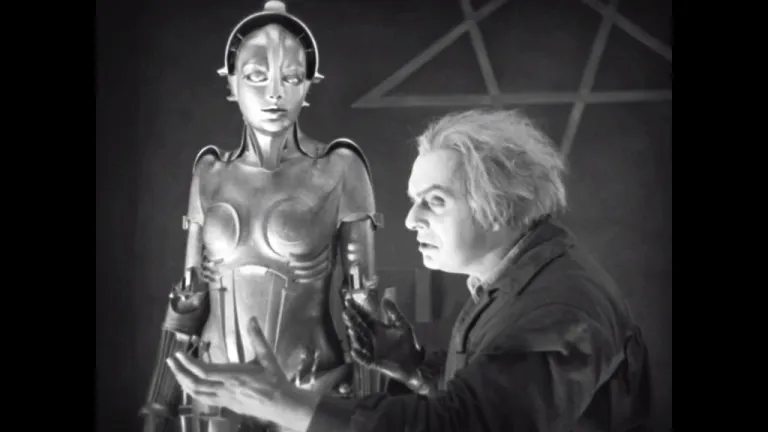The Hounds of Tindalos
This post is the result of listening to All nightmare long, a Metallica song contained in their 2009 album Death Magnetic. As soon as somebody mentioned the story about those hounds I downloaded it and saw it creates the weather for a memorable horror story.

Fuente
He is locked in his own world working on his investigations until he requires the help of his closest friend whose name is not told along the narration. This friend of his, a second person narrator is the opposite of Chalmers´ personality: even both are analytical and abstract, Chalmers interests on metaphysics and, for the moment, unreal entities, defer from his friend´s writing subjects more attached to the measurable world. These cahracters are both important during the first part of the story because they display different opinions held properly without attacking the other speaker´s dignity but only his arguments. Chalmers´ studies can be catalogued into theosophical and esoteric matters. The second narrator called them fantasies which is normal for his kind of people.

Fuente
The characters that second Chalmers and his friend are only to give clousure to Belknap Long´s story. After the second character departures from Chalmers´place we cannot know what happens to the occultist writer if the narrator left him to his own. To tell of the end of the plot is up to three characters barely related to Chalmers. L. E. Hancock is next door Chalmers´ neighbour. He got noticed of Chalmers´ disappearance because of the smell that "came down from of his door." Hancock thought the smell was because of a leak of gas. After visualizing the worst scenario, Hancock ran to tell the landsman to open Chalmers´ flat and shot the gas faucet. When they enter the key inside Chalmers´ door locker they found that every piece of furniture had disappeared and, in the middle of the place Chalmers´ corpse laid naked and beheaded. After calling the police, Sergeant Detective Douglas enters the scene to gather information to solve the mystery. One of the pieces of evidence he gathered is the blue saliva left by the hounds and took it to the Patridegeville Chemical Laboratory to be analyzed by the chemicist and bacteriologist James Morton. In the report of the analysis of the strange chemical blue substance, Morton explained it has no enzymes and didn´t belong to any known form of life.
Halpin Chalmers´ library is compound by the works of John Dee, Plotinus, Saint Tomás de Aquino, Emmanuel Mascopuolos and Frenicle de Bressy and several manuscripts about medieval witchcraft and black magic altogether with some strange geometrical sketches made by Chalmers, probably through his wide awake hyperactive nights. As the narrator said in the first line of the story, Chalmers´ place was made a mess because of his papers and other working tools were piled over or spreaded through out every area one could walk and sit. This is something we can expect of someone who tries to learn and master several fields -may be or may not be related- only to achieve his/her goal without any help.

Fuente
The chatter after the second narrator´s arrival, Chalmers proceeds to explain his researching about the fourth dimension and how to get there. Let me explain that, after the regular measures we know as length, width and depth, there´s also a fourth measure we have to take into account –at least, for the matter of this story- which comes to be the time. Chalmers explains that in this plane of reality we are not aware of, all past, present and future events in Mankind´s history are going on simultaneously.
His friend doesn´t believe him and recommends him seriously to go doctor´s consultory. Chalmers tries to make himself clear but every word sounds like a mad man fantasy.
…At this part of the story, there are no surprises because we see something that we have seen already in works such as "Metropolis" by Fritz Lang or "Frankenstein" by Mary Shelley: a mad scientist (or writer or musician) desires to reach an impossible goal that makes him look and sound like a maniac –at this point I´m feeling kind of discriminated because most of the freaks of this kind are male and, as a woman and as an individual whose tendencies are related to unreal, undeterminated and impossible subjects, sometimes makes me think I was born in the wrong gender- and isolates him slowly from all his relatives and society until he finds himself incapable to treat people normally…
After getting his friend´s cooperation, Chalmers shows him a small chess that contains an Asian recently found drug that is supposed to make easier Chalmers´ travelling through the fourth dimension. His friend´s support consists only on writing down every word spelled by Chalmers during his journey.
Chalmers is confident because he´s been studying geometry and mathematical language that will help him understand the messages he could get from that dimension.
After taking the drug and entering the upper dimension, Chalmers describes all he witnesses: different periods of human history and the different roles he plays according to the èpoque his is living in at the moment.
Everything seemed to go right until Chalmers met specie of animal that inhabits the angles of the physical space. In the known dimension, the second person narrator describes Chalmers´ gestures, body language and reactions to something that is not there, though, he can perceive the putrid smell of those creatures.
When Chalmers is out of the effect of the drug and he´s himself again, tells those animals live beyond time and they are what remained of the act of creation: the place they belong, unholy and untraceable, is the limit for the history of the universe. When they perceived Chalmers´ smell the hounds chased him and he ran across centuries to come back to the twentieth century where the story is settled.
When Chalmer´s friend left the flat, he heard Chalmers´ laughter which sounded sad and made cry his friend.

Fuente
The second part of Belknap Long´s story takes place in Chalmers´ flat again. In order to stay more "time" in the fourth dimension, Chalmers decided to buy plaster and mix it with water to soften the angles of every corner in the flat created by the join of every edge of the walls and floor. Chalmers took out all his furniture -probably thinking of the angles inside the joins of every piece of wood- and, as a proof of an even more paranoic behaviour, he and his friend applied the plaster inside the angles of the window in the flat. It seemed to be the only way the hounds of Tindalos wouldn´t smell and run after him.
...Metaphisics seemes to be the keyword to describe Chalmers´ obsession. Whoever who is interested in Euclidean and non-Euclidean geometry -I mean the hypercube and other impossible figures-, holds the opinion that matter is nothing but condensed energy or even people who think angels are extraterrestrial helpers of mankind and not the messagers of God, may be closer to Chalmers´ way of thinking than the ones who are more ortodoxist or "realistic". At least, my Head of redaction thinks this is a science fiction subject and I have to face the basic facts about the place we all can see, touch and measure with all the tools we got for that task. "Matter, energy are barriers placed by time and space to shorten our perception"... Just to paraphrase Chalmers´ speech...
The third and last section of Belknap Long´s story starts with the headings of two cut articles of the Patridgeville Gazette published July 3rd 1928. The first one is related to an earthquake that destroyed main buildings in city centre and caused little damage in suburban areas.
The second article is about the murder of Halpin Chalmers and the strange circumstances around the case. Chalmers´ next door neighbour, L. E. Hancock called the landsman to enter the writer´s place, they found his corpse naked and covered with a blue gel. His head was cut off from his torso and placed on his chest. An expresion of pain and dispair was stamped on his face.
The plaster applied on every corner in the flat got cracked or fell off in pieces. Those pieces were placed around Chalmers forming a perfect triangle. Next to his cadaver, the yellow pages, with most part of their surface was burnt down. The little few that survived flames had fantasy like symbols, geometric figures and several sentences hand written in hurry. Sergeant Detective Douglas analyzed them and couldn´t get any clue to find the author of the homicide: it looked like the gibberish of a too bookish person who had mental hyperactivity and mixed all his/her knowledge trying to syntetize everything in a single paper. Of course, paranoid thinking could had been one of the several conclusions that Douglas could have jumped into, Chalmers mentioned the hounds, how close were they and the lack of proofs of their presence.
.-.-.-.-.-.-.-.-.-.-.-.-.-.-.-.-.-.-.-.-.-.-.-.-.-.-.-.-.-.-.-.-.-.-.-.-.-.-.-.-.-.
This is the first long post I write in English after over a year. I hope you´ve liked it and if you have comments and counterarguments, let them after your reading.